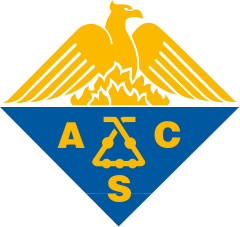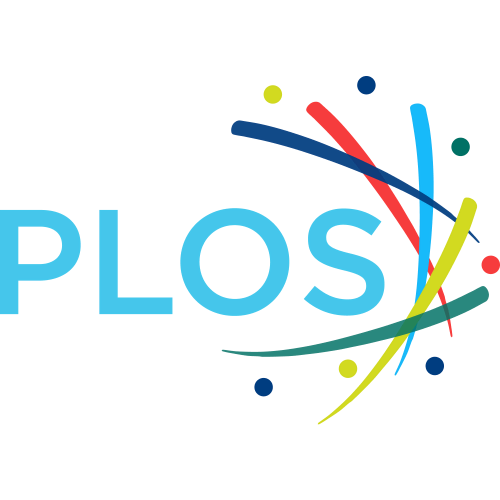King Mongkut's Institute of Technology North Bangkok
Are you a researcher?
Create a profile to get free access to personal recommendations for colleagues and new articles.

Publications
5 819
Citations
82 299
h-index
101
Top-3 journals

Key Engineering Materials
(184 publications)

E3S Web of Conferences
(142 publications)

Advanced Materials Research
(125 publications)
Top-3 organizations

King Mongkut's University of Technology Thonburi
(510 publications)

Kasetsart University
(339 publications)

Chulalongkorn University
(338 publications)
Top-3 foreign organizations

King Abdulaziz University
(187 publications)

University of Ioannina
(186 publications)

China Medical University (Taiwan)
(129 publications)
Top-1 researchers by h-index
Most cited in 5 years
Found
Nothing found, try to update filter.
Found
Nothing found, try to update filter.
Since 2004
Total publications
5819
Total citations
82299
Citations per publication
14.14
Average publications per year
253
Average authors per publication
4.44
h-index
101
Metrics description
h-index
A scientist has an h-index if h of his N publications are cited at least h times each, while the remaining (N - h) publications are cited no more than h times each.
Top-30
Fields of science
|
100
200
300
400
500
600
|
|
|
General Materials Science
|
General Materials Science, 544, 9.35%
General Materials Science
544 publications, 9.35%
|
|
General Medicine
|
General Medicine, 537, 9.23%
General Medicine
537 publications, 9.23%
|
|
Mechanical Engineering
|
Mechanical Engineering, 440, 7.56%
Mechanical Engineering
440 publications, 7.56%
|
|
Mechanics of Materials
|
Mechanics of Materials, 403, 6.93%
Mechanics of Materials
403 publications, 6.93%
|
|
Condensed Matter Physics
|
Condensed Matter Physics, 359, 6.17%
Condensed Matter Physics
359 publications, 6.17%
|
|
Electrical and Electronic Engineering
|
Electrical and Electronic Engineering, 358, 6.15%
Electrical and Electronic Engineering
358 publications, 6.15%
|
|
General Engineering
|
General Engineering, 356, 6.12%
General Engineering
356 publications, 6.12%
|
|
General Chemistry
|
General Chemistry, 323, 5.55%
General Chemistry
323 publications, 5.55%
|
|
Renewable Energy, Sustainability and the Environment
|
Renewable Energy, Sustainability and the Environment, 311, 5.34%
Renewable Energy, Sustainability and the Environment
311 publications, 5.34%
|
|
Materials Chemistry
|
Materials Chemistry, 308, 5.29%
Materials Chemistry
308 publications, 5.29%
|
|
Polymers and Plastics
|
Polymers and Plastics, 308, 5.29%
Polymers and Plastics
308 publications, 5.29%
|
|
General Chemical Engineering
|
General Chemical Engineering, 261, 4.49%
General Chemical Engineering
261 publications, 4.49%
|
|
General Mathematics
|
General Mathematics, 261, 4.49%
General Mathematics
261 publications, 4.49%
|
|
Applied Mathematics
|
Applied Mathematics, 245, 4.21%
Applied Mathematics
245 publications, 4.21%
|
|
Energy Engineering and Power Technology
|
Energy Engineering and Power Technology, 230, 3.95%
Energy Engineering and Power Technology
230 publications, 3.95%
|
|
Analysis
|
Analysis, 190, 3.27%
Analysis
190 publications, 3.27%
|
|
Ceramics and Composites
|
Ceramics and Composites, 173, 2.97%
Ceramics and Composites
173 publications, 2.97%
|
|
Industrial and Manufacturing Engineering
|
Industrial and Manufacturing Engineering, 170, 2.92%
Industrial and Manufacturing Engineering
170 publications, 2.92%
|
|
Civil and Structural Engineering
|
Civil and Structural Engineering, 141, 2.42%
Civil and Structural Engineering
141 publications, 2.42%
|
|
Engineering (miscellaneous)
|
Engineering (miscellaneous), 141, 2.42%
Engineering (miscellaneous)
141 publications, 2.42%
|
|
Building and Construction
|
Building and Construction, 139, 2.39%
Building and Construction
139 publications, 2.39%
|
|
Surfaces, Coatings and Films
|
Surfaces, Coatings and Films, 134, 2.3%
Surfaces, Coatings and Films
134 publications, 2.3%
|
|
General Physics and Astronomy
|
General Physics and Astronomy, 130, 2.23%
General Physics and Astronomy
130 publications, 2.23%
|
|
Algebra and Number Theory
|
Algebra and Number Theory, 124, 2.13%
Algebra and Number Theory
124 publications, 2.13%
|
|
Computer Science (miscellaneous)
|
Computer Science (miscellaneous), 120, 2.06%
Computer Science (miscellaneous)
120 publications, 2.06%
|
|
Fuel Technology
|
Fuel Technology, 119, 2.05%
Fuel Technology
119 publications, 2.05%
|
|
General Computer Science
|
General Computer Science, 119, 2.05%
General Computer Science
119 publications, 2.05%
|
|
Computer Science Applications
|
Computer Science Applications, 116, 1.99%
Computer Science Applications
116 publications, 1.99%
|
|
Environmental Engineering
|
Environmental Engineering, 112, 1.92%
Environmental Engineering
112 publications, 1.92%
|
|
Organic Chemistry
|
Organic Chemistry, 105, 1.8%
Organic Chemistry
105 publications, 1.8%
|
|
100
200
300
400
500
600
|
Journals
|
20
40
60
80
100
120
140
160
180
200
|
|
|
Key Engineering Materials
184 publications, 3.16%
|
|
|
E3S Web of Conferences
142 publications, 2.44%
|
|
|
Advanced Materials Research
125 publications, 2.15%
|
|
|
Materials Today: Proceedings
103 publications, 1.77%
|
|
|
IEEE Access
100 publications, 1.72%
|
|
|
Advances in Intelligent Systems and Computing
95 publications, 1.63%
|
|
|
Materials Science Forum
91 publications, 1.56%
|
|
|
Applied Mechanics and Materials
87 publications, 1.5%
|
|
|
Polymer Composites
85 publications, 1.46%
|
|
|
IOP Conference Series: Materials Science and Engineering
84 publications, 1.44%
|
|
|
Mathematics
76 publications, 1.31%
|
|
|
Energy Procedia
72 publications, 1.24%
|
|
|
Advances in Difference Equations
72 publications, 1.24%
|
|
|
Biomass Conversion and Biorefinery
69 publications, 1.19%
|
|
|
Symmetry
68 publications, 1.17%
|
|
|
Journal of Physics: Conference Series
58 publications, 1%
|
|
|
Lecture Notes in Networks and Systems
57 publications, 0.98%
|
|
|
International Journal of Hydrogen Energy
55 publications, 0.95%
|
|
|
Heliyon
50 publications, 0.86%
|
|
|
Scientific Reports
47 publications, 0.81%
|
|
|
Lecture Notes in Computer Science
46 publications, 0.79%
|
|
|
Energies
45 publications, 0.77%
|
|
|
Construction and Building Materials
43 publications, 0.74%
|
|
|
AIMS Mathematics
41 publications, 0.7%
|
|
|
Polymers
38 publications, 0.65%
|
|
|
AIP Conference Proceedings
38 publications, 0.65%
|
|
|
ACS Omega
37 publications, 0.64%
|
|
|
Lobachevskii Journal of Mathematics
37 publications, 0.64%
|
|
|
Journal of Natural Fibers
36 publications, 0.62%
|
|
|
IOP Conference Series: Earth and Environmental Science
34 publications, 0.58%
|
|
|
20
40
60
80
100
120
140
160
180
200
|
Publishers
|
200
400
600
800
1000
1200
1400
1600
|
|
|
Elsevier
1419 publications, 24.39%
|
|
|
Springer Nature
1107 publications, 19.02%
|
|
|
MDPI
586 publications, 10.07%
|
|
|
Trans Tech Publications
525 publications, 9.02%
|
|
|
Wiley
313 publications, 5.38%
|
|
|
Taylor & Francis
242 publications, 4.16%
|
|
|
IOP Publishing
203 publications, 3.49%
|
|
|
Institute of Electrical and Electronics Engineers (IEEE)
176 publications, 3.02%
|
|
|
EDP Sciences
160 publications, 2.75%
|
|
|
Hindawi Limited
132 publications, 2.27%
|
|
|
SAGE
107 publications, 1.84%
|
|
|
World Scientific and Engineering Academy and Society (WSEAS)
77 publications, 1.32%
|
|
|
American Chemical Society (ACS)
69 publications, 1.19%
|
|
|
AIP Publishing
52 publications, 0.89%
|
|
|
American Institute of Mathematical Sciences (AIMS)
50 publications, 0.86%
|
|
|
Pleiades Publishing
48 publications, 0.82%
|
|
|
Walter de Gruyter
43 publications, 0.74%
|
|
|
Royal Society of Chemistry (RSC)
35 publications, 0.6%
|
|
|
Institute of Advanced Engineering and Science (IAES)
34 publications, 0.58%
|
|
|
World Scientific
32 publications, 0.55%
|
|
|
Public Library of Science (PLoS)
27 publications, 0.46%
|
|
|
Emerald
25 publications, 0.43%
|
|
|
Frontiers Media S.A.
25 publications, 0.43%
|
|
|
Institution of Engineering and Technology (IET)
22 publications, 0.38%
|
|
|
PeerJ
21 publications, 0.36%
|
|
|
ASME International
15 publications, 0.26%
|
|
|
Inderscience Publishers
13 publications, 0.22%
|
|
|
Alexandria University
12 publications, 0.21%
|
|
|
Korean Society of Mechanical Engineers
9 publications, 0.15%
|
|
|
Japan Society of Mechanical Engineers
9 publications, 0.15%
|
|
|
200
400
600
800
1000
1200
1400
1600
|
With other organizations
|
100
200
300
400
500
600
|
|
|
King Mongkut's University of Technology Thonburi
510 publications, 8.76%
|
|
|
Kasetsart University
339 publications, 5.83%
|
|
|
Chulalongkorn University
338 publications, 5.81%
|
|
|
King Mongkut's Institute of Technology Ladkrabang
223 publications, 3.83%
|
|
|
Mahidol University
203 publications, 3.49%
|
|
|
King Abdulaziz University
187 publications, 3.21%
|
|
|
University of Ioannina
186 publications, 3.2%
|
|
|
National Science and Technology Development Agency
185 publications, 3.18%
|
|
|
Chiang Mai University
158 publications, 2.72%
|
|
|
China Medical University (Taiwan)
129 publications, 2.22%
|
|
|
Thammasat University
129 publications, 2.22%
|
|
|
Khon Kaen University
125 publications, 2.15%
|
|
|
Prince of Songkla University
118 publications, 2.03%
|
|
|
Kalasalingam Academy of Research and Education
95 publications, 1.63%
|
|
|
University of Lorraine
82 publications, 1.41%
|
|
|
Suranaree University of Technology
82 publications, 1.41%
|
|
|
National Metal and Materials Technology Center
82 publications, 1.41%
|
|
|
University of Phayao
81 publications, 1.39%
|
|
|
Srinakharinwirot University
77 publications, 1.32%
|
|
|
Silpakorn University
76 publications, 1.31%
|
|
|
RWTH Aachen University
68 publications, 1.17%
|
|
|
National Center for Genetic Engineering and Biotechnology
63 publications, 1.08%
|
|
|
National Nanotechnology Center
63 publications, 1.08%
|
|
|
Rajamangala University of Technology Isan
53 publications, 0.91%
|
|
|
University of Pitesti
50 publications, 0.86%
|
|
|
Synchrotron Light Research Institute
44 publications, 0.76%
|
|
|
Burapha University
43 publications, 0.74%
|
|
|
King Saud University
41 publications, 0.7%
|
|
|
Visvesvaraya Technological University
41 publications, 0.7%
|
|
|
National Electronics and Computer Technology Center
41 publications, 0.7%
|
|
|
100
200
300
400
500
600
|
With foreign organizations
|
20
40
60
80
100
120
140
160
180
200
|
|
|
King Abdulaziz University
187 publications, 3.21%
|
|
|
University of Ioannina
186 publications, 3.2%
|
|
|
China Medical University (Taiwan)
129 publications, 2.22%
|
|
|
Kalasalingam Academy of Research and Education
95 publications, 1.63%
|
|
|
University of Lorraine
82 publications, 1.41%
|
|
|
RWTH Aachen University
68 publications, 1.17%
|
|
|
University of Pitesti
50 publications, 0.86%
|
|
|
King Saud University
41 publications, 0.7%
|
|
|
Visvesvaraya Technological University
41 publications, 0.7%
|
|
|
Prince Sattam bin Abdulaziz University
38 publications, 0.65%
|
|
|
University Putra Malaysia
38 publications, 0.65%
|
|
|
Saveetha Institute of Medical and Technical Sciences
34 publications, 0.58%
|
|
|
Politehnica University of Bucharest
34 publications, 0.58%
|
|
|
Brawijaya University
31 publications, 0.53%
|
|
|
Hindustan Institute of Technology and Science
30 publications, 0.52%
|
|
|
National Institute of Technology Tiruchirappalli
29 publications, 0.5%
|
|
|
PSG Institute of Technology and Applied Research
29 publications, 0.5%
|
|
|
Islamic Azad University, Tehran
28 publications, 0.48%
|
|
|
Nanjing Normal University
27 publications, 0.46%
|
|
|
Tokyo Institute of Technology
25 publications, 0.43%
|
|
|
Vellore Institute of Technology University
24 publications, 0.41%
|
|
|
Abdul Wali Khan University
24 publications, 0.41%
|
|
|
University of Leeds
24 publications, 0.41%
|
|
|
Prince Sultan University
23 publications, 0.4%
|
|
|
Shahid Beheshti University
23 publications, 0.4%
|
|
|
COMSATS University Islamabad
23 publications, 0.4%
|
|
|
Coimbatore Institute of Technology
22 publications, 0.38%
|
|
|
University of Hertfordshire
22 publications, 0.38%
|
|
|
University of Malakand
21 publications, 0.36%
|
|
|
Azarbaijan Shahid Madani University
21 publications, 0.36%
|
|
|
20
40
60
80
100
120
140
160
180
200
|
With other countries
|
100
200
300
400
500
600
|
|
|
India
|
India, 541, 9.3%
India
541 publications, 9.3%
|
|
China
|
China, 365, 6.27%
China
365 publications, 6.27%
|
|
Saudi Arabia
|
Saudi Arabia, 328, 5.64%
Saudi Arabia
328 publications, 5.64%
|
|
Pakistan
|
Pakistan, 192, 3.3%
Pakistan
192 publications, 3.3%
|
|
Greece
|
Greece, 191, 3.28%
Greece
191 publications, 3.28%
|
|
USA
|
USA, 169, 2.9%
USA
169 publications, 2.9%
|
|
France
|
France, 161, 2.77%
France
161 publications, 2.77%
|
|
Germany
|
Germany, 159, 2.73%
Germany
159 publications, 2.73%
|
|
United Kingdom
|
United Kingdom, 155, 2.66%
United Kingdom
155 publications, 2.66%
|
|
Japan
|
Japan, 129, 2.22%
Japan
129 publications, 2.22%
|
|
Malaysia
|
Malaysia, 126, 2.17%
Malaysia
126 publications, 2.17%
|
|
Iran
|
Iran, 99, 1.7%
Iran
99 publications, 1.7%
|
|
Iraq
|
Iraq, 96, 1.65%
Iraq
96 publications, 1.65%
|
|
Turkey
|
Turkey, 90, 1.55%
Turkey
90 publications, 1.55%
|
|
Republic of Korea
|
Republic of Korea, 79, 1.36%
Republic of Korea
79 publications, 1.36%
|
|
Canada
|
Canada, 60, 1.03%
Canada
60 publications, 1.03%
|
|
Australia
|
Australia, 57, 0.98%
Australia
57 publications, 0.98%
|
|
Italy
|
Italy, 55, 0.95%
Italy
55 publications, 0.95%
|
|
Romania
|
Romania, 54, 0.93%
Romania
54 publications, 0.93%
|
|
Indonesia
|
Indonesia, 53, 0.91%
Indonesia
53 publications, 0.91%
|
|
Nigeria
|
Nigeria, 53, 0.91%
Nigeria
53 publications, 0.91%
|
|
Vietnam
|
Vietnam, 52, 0.89%
Vietnam
52 publications, 0.89%
|
|
Egypt
|
Egypt, 38, 0.65%
Egypt
38 publications, 0.65%
|
|
UAE
|
UAE, 27, 0.46%
UAE
27 publications, 0.46%
|
|
Algeria
|
Algeria, 24, 0.41%
Algeria
24 publications, 0.41%
|
|
South Africa
|
South Africa, 23, 0.4%
South Africa
23 publications, 0.4%
|
|
Russia
|
Russia, 19, 0.33%
Russia
19 publications, 0.33%
|
|
Spain
|
Spain, 17, 0.29%
Spain
17 publications, 0.29%
|
|
Singapore
|
Singapore, 16, 0.27%
Singapore
16 publications, 0.27%
|
|
100
200
300
400
500
600
|
- We do not take into account publications without a DOI.
- Statistics recalculated daily.
- Publications published earlier than 2004 are ignored in the statistics.
- The horizontal charts show the 30 top positions.
- Journals quartiles values are relevant at the moment.














































































